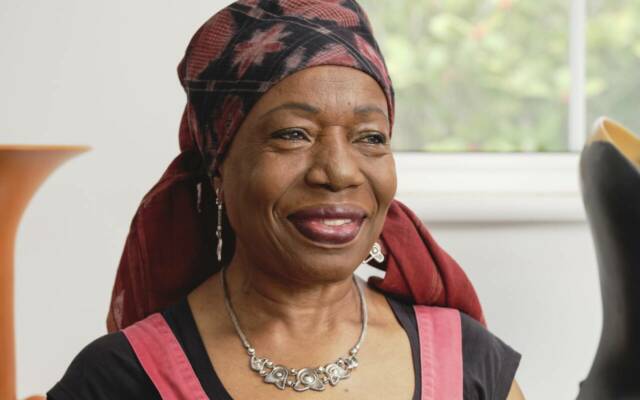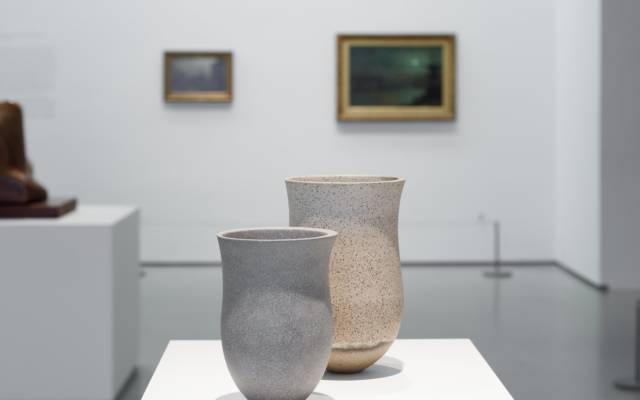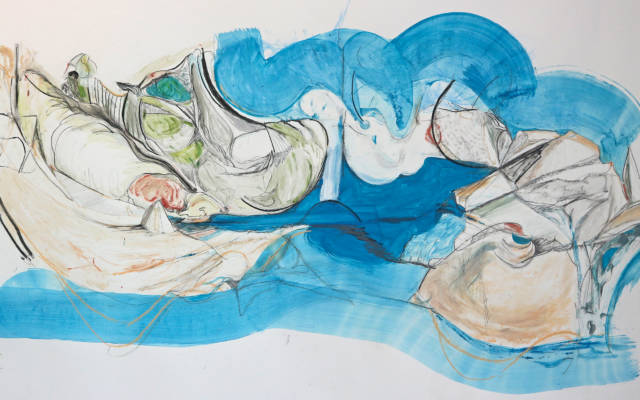
New acquisitions go on display at The Hepworth Wakefield marking 100 years since Wakefield’s art collection was established.
20 Jan 2023
Wakefield’s art collection was established a century ago in 1923, to nurture an understanding of contemporary art and its relation to modern life. When The Hepworth Wakefield opened in 2011, it took on responsibility for caring, researching, publicly sharing and strategically building the collection in line with the founding aim, supporting living artists and filling historic gaps, all through fundraising activity or generous donations of artworks. Three new exhibitions open this month, celebrating the breadth of this important living collection and recognising the many organisations, communities and individuals who have supported the development of it.
A Living Collection presents new works that have recently been added to the collection in dialogue with historic works in the collection, including by Henry Moore and Barbara Hepworth which were acquired by Wakefield in the 1920s and 30s as these Wakefield-born artists were establishing their careers.
Artworks on display in A Living Collection for the first time since their acquisition include: a large-scale fresco painting, Republic, 2020, by Rosie Hastings and Hannah Quinlan, gifted by Russell Tovey through the Contemporary Art Society. The painting was provoked by a question of what a woman-dominated society would look like. Rejecting a utopian idea of a non-violent and inherently caring society, the duo depict women in conflict in a public space, highlighting issues of racism, homophobia and transphobia.
An oil painting, Elliot, 2020, by Yorkshire-born artist Sarah Ball was acquired for The Hepworth Wakefield in 2022 through a generous donation from Greg and Alyssa Shannon and with thanks to Stephen Friedman Gallery. The portrait exemplifies her signature soft brushstrokes and muted colour palette that contrast with the piercing gaze of her subject – often people found from newspaper cuttings, archive photographs or social media. Ball’s paintings are both intimate and confrontational, addressing issues of identity, gender and accepted aesthetics.
Jimmy Robert’s Frammenti VII, 2020, gifted by Thomas Dane Gallery, is one of a series of eight Frammenti works by the artist, that bring together collage, photography and sculpture to reflect on the Black body and its representation in classical sculpture.

Magic in this Country: Hepworth, Moore and the Land takes Hepworth and Moore’s formative artistic influence of the landscape as its starting point. Moore spoke of early encounters with rocky outcrops, the ‘big, bleak lump of stone set in the landscape’, while Hepworth recalled, ‘moving through and over the West Riding landscape with my father in his car, the hills were sculptures; the roads defined the forms’. This exhibition explores the specific landscapes that continued to inspire them throughout their lives, alongside works by contemporary and historic artist in the collection that were inspired by those same landscapes.
On displays are some of the earliest paintings to join the collection in the 1920s, including Philip Reinagle’s 1793 view of Wakefield Bridge and Chantry Chapel and John Atkinson Grimshaw’s Baiting the Lines, Whitby, 1884, as well as recent work created since 2020 by Emii Alrai and Ro Robertson.

The Art of the Potter: Ceramics and Sculpture from 1930 to Now celebrates Wakefield’s progressive approach to collecting ceramics, highlighting artists who explore the sculptural possibilities of this versatile medium since the 1930s. The Hepworth Wakefield has significantly developed Wakefield’s holdings of ceramics in the last few years and a number of new gifts and bequests will be displayed, including an important multi-piece work by Gwyn Hanssen Pigott 2012, a large moon jar by Akiko Hirari 2020 and Asymmetric Vessel made by Magdalene Odundo in 2022 which will be displayed at the gallery for the first time following its debut at the 2022 Venice Art Biennale. Other artists included are Alison Britton, Hans Coper, Elizabeth Fritsch, Ewen Henderson, Ryoii Koie, Bernard and Janet Leach, Jennifer Lee and Lucie Rie.
Simon Wallis, Director of The Hepworth Wakefield said: ‘The Hepworth Wakefield has no budget for acquisitions and relies on donations, gifts and fundraising to continue to build the collection in line with its original ambitions and in order to remain relevant today. These new exhibitions are testament to the hard work of the gallery team in strategically developing the collection and to our many supporters for recognising the importance of Wakefield’s collection and our ability to display and share art works with wide audiences in innovative and engaging ways. I very much hope the collection will continue to develop and inspire audiences for another 100 years.’








